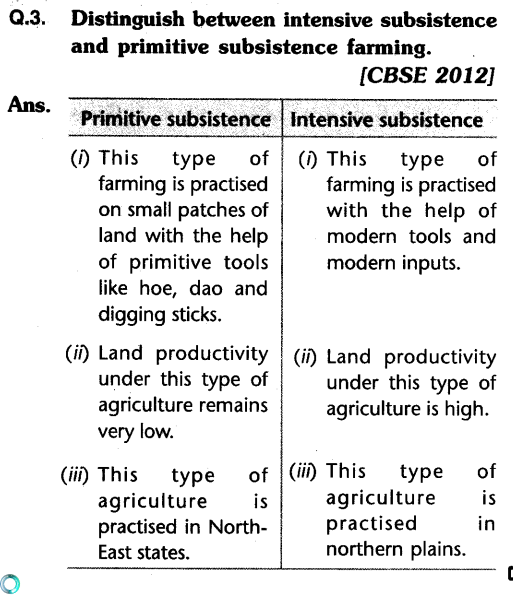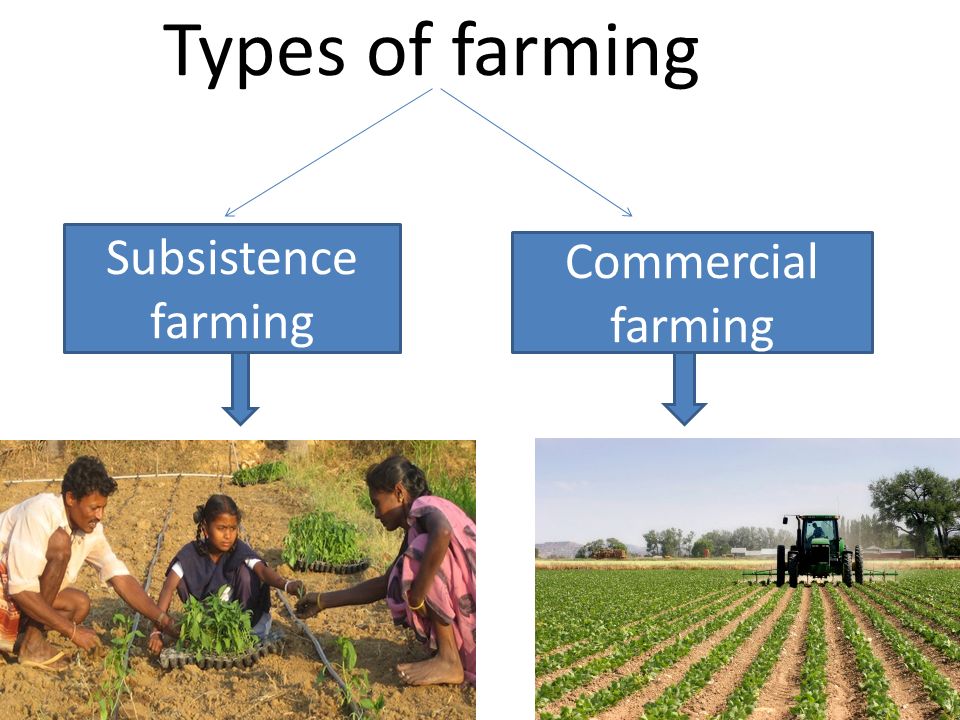Discovering the Differences Between Commercial Farming and Subsistence Farming Practices
The duality between business and subsistence farming practices is noted by differing goals, operational ranges, and source use, each with profound effects for both the setting and society. Conversely, subsistence farming highlights self-sufficiency, leveraging typical techniques to maintain house demands while supporting community bonds and social heritage.
Economic Purposes
Financial objectives in farming practices typically determine the approaches and range of operations. In business farming, the primary financial objective is to maximize profit.
On the other hand, subsistence farming is primarily oriented towards fulfilling the prompt requirements of the farmer's family members, with surplus production being very little. The financial objective here is often not make money maximization, however instead self-sufficiency and danger reduction. These farmers generally operate with limited resources and depend on typical farming techniques, customized to local ecological problems. The key goal is to make certain food protection for the house, with any kind of excess fruit and vegetables offered locally to cover fundamental needs. While business farming is profit-driven, subsistence farming is centered around sustainability and durability, showing an essentially different set of economic imperatives.

Range of Procedures
When thinking about the scale of procedures,The difference between business and subsistence farming ends up being specifically noticeable. Business farming is defined by its massive nature, commonly including extensive systems of land and employing advanced equipment. These operations are commonly integrated into international supply chains, producing huge amounts of plants or animals intended offer for sale in residential and worldwide markets. The range of industrial farming enables economies of range, causing minimized costs each with automation, increased effectiveness, and the capability to spend in technical developments.
In plain comparison, subsistence farming is usually small-scale, concentrating on creating simply sufficient food to fulfill the prompt demands of the farmer's family or local community. The land area involved in subsistence farming is typically minimal, with much less accessibility to contemporary innovation or automation. This smaller scale of operations reflects a reliance on standard farming strategies, such as manual work and easy devices, bring about reduced performance. Subsistence ranches focus on sustainability and self-sufficiency over profit, with any kind of excess normally traded or traded within regional markets.
Resource Use
Business farming, characterized by massive procedures, typically uses advanced innovations and automation to optimize the use of sources such as land, water, and plant foods. Precision agriculture is significantly taken on in commercial farming, using information analytics and satellite technology to keep an eye on crop wellness and enhance resource application, additional improving return and source efficiency.
On the other hand, subsistence farming runs on a much smaller sized range, primarily to satisfy the instant requirements of the farmer's house. commercial farming vs subsistence farming. Source application in subsistence farming is commonly restricted by economic restraints and a reliance on conventional methods. Farmers normally make use of manual work and natural deposits readily available in your area, such as rain and natural garden compost, to grow their crops. The focus is on sustainability and self-sufficiency rather than taking full advantage of outcome. As a result, subsistence farmers may deal with difficulties in resource management, including limited access to boosted seeds, plant foods, and watering, which can restrict their ability to enhance performance and productivity.
Ecological Impact

Conversely, subsistence farming, exercised on a smaller sized scale, generally utilizes standard techniques that are much more in consistency with the surrounding setting. Plant rotation, intercropping, and organic fertilization are usual, advertising soil wellness and reducing the need for synthetic inputs. While subsistence farming normally has a reduced ecological impact, it is not without challenges. Over-cultivation and bad land monitoring can cause dirt disintegration and deforestation sometimes.
Social and Cultural Effects
Farming techniques are deeply linked with the cultural and social material of neighborhoods, influencing and reflecting their worths, customs, and economic structures. In browse around these guys subsistence farming, the focus gets on cultivating enough food to fulfill the prompt requirements of the farmer's family, frequently cultivating a solid sense of community and shared responsibility. Such techniques are deeply rooted in regional traditions, with expertise gave through generations, thereby maintaining social heritage and strengthening communal connections.
Alternatively, industrial farming is mainly driven by market needs and earnings, frequently causing a shift towards monocultures and large operations. This approach can lead to the erosion of typical farming methods and social identifications, as local customizeds and expertise are supplanted by standardized, commercial methods. In addition, the concentrate on performance and revenue can in some cases lessen the social communication discovered in subsistence areas, as financial purchases replace community-based exchanges.
The duality between these farming practices highlights the more comprehensive social implications of agricultural selections. While subsistence farming supports social connection and area interdependence, industrial farming straightens with globalization and financial growth, commonly at the cost of conventional social frameworks and multiculturalism. commercial farming vs subsistence farming. Balancing these elements continues to be a critical difficulty for lasting farming growth
Conclusion
The evaluation of industrial and subsistence farming techniques reveals significant differences in goals, range, source usage, environmental effect, and social effects. Business farming prioritizes profit and efficiency with massive procedures and progressed modern technologies, often at the expense of environmental sustainability. On the other hand, subsistence farming stresses self-sufficiency, utilizing typical approaches and neighborhood sources, consequently advertising cultural preservation and community cohesion. These contrasting methods highlight the complicated interplay between financial development and the requirement for socially comprehensive and eco lasting agricultural practices.
The dichotomy between business and subsistence farming methods is marked by varying objectives, functional scales, and source usage, each with reference profound effects for both the atmosphere and culture. While industrial farming is profit-driven, subsistence farming is centered around sustainability and resilience, showing an essentially various collection of financial imperatives.
The difference between industrial and subsistence farming becomes specifically apparent when taking into consideration the scale of procedures. While subsistence farming supports social connection and area interdependence, business farming lines up with globalization and financial growth, commonly at the cost of standard social structures and cultural variety.The examination of industrial and subsistence farming techniques exposes significant differences in purposes, range, resource use, ecological influence, and social ramifications.